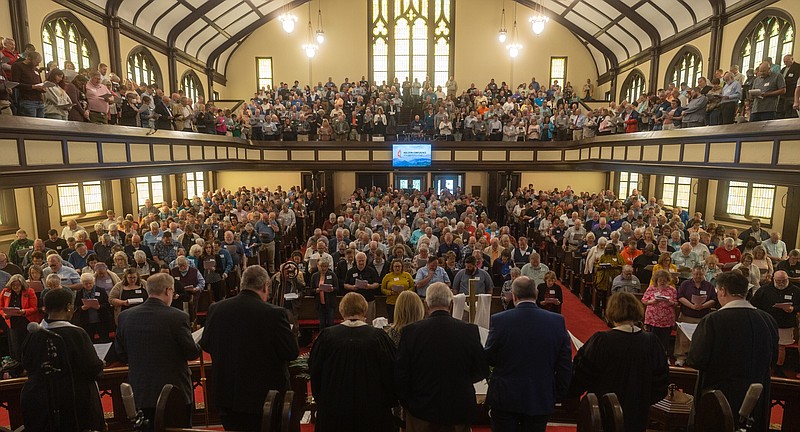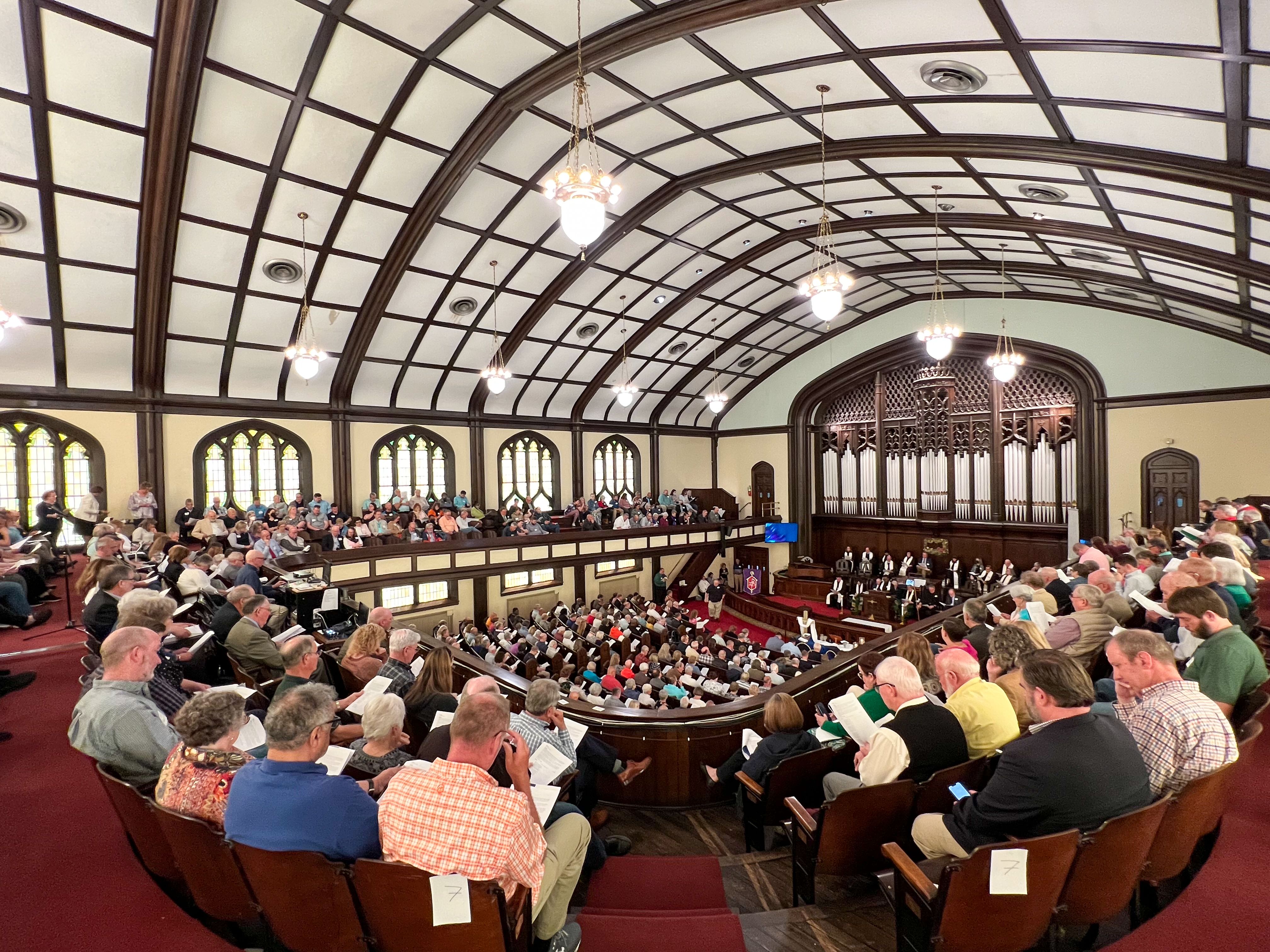The breakup of the United Methodist Church has now officially come to East Tennessee. In the local expression of a historic church schism, one in three congregations in the regional Holston Conference were approved to leave the denomination at a special meeting Saturday.
A worldwide faith, the United Methodists claim more than 6 million U.S. members, making it the nation's largest mainline Protestant denomination. As Holston Conference Bishop Debra Wallace-Padgett reminded the church representatives gathered at a packed Central United Methodist Church in Knoxville, the split is just the latest in a long history of fractures within Christian denominations. Political and scriptural debates have long torn major religious groups asunder.
The reasons for this particular split have long been in dispute. Though far from a majority, a significant portion of United Methodist churches, largely in the South, have moved to leave the denomination amid debates over church sanction of same-sex marriage and gay clergy — issues many theological conservatives describe as flash points for deeper disputes about scriptural authority.
(READ MORE: In Chattanooga and beyond, United Methodist Church split echoes Presbyterian past)
Others reject this characterization. The big-tent United Methodist Church thrives on debate rooted in a common fundamental belief system, remainers say, and a disagreement over scriptural interpretation is not the same thing as a disagreement over its authority.
But departing theological conservatives describe the watering-down of the United Methodist identity and — pointing, for example, to gay bishops out West — say the denomination, which technically bans openly-gay clergy, isn't enforcing its own rules.
What comes next for the departing churches remains an open question. Many may opt to remain independent; others may join an emerging denomination like the Global Methodist Church — organized in part by the Wesleyan Covenant Association, a theologically conservative Methodist group which has played a key role advocating disaffiliation in Holston and beyond.
Still, the majority of congregations, even in the South, have opted so far to remain United Methodist.
In Holston, which comprises United Methodist churches in East Tennessee and bordering sections of Georgia and Virginia, officials said the 264 departing churches tended to be smaller.
According to conference communication director Tim Jones, the churches represent 21% of the nearly 148,000 members of the Holston Conference. Two out of three departing congregations, he said in a press release, had fewer than 100 members. And out of the conference's 25 churches with more than 1,000 members, 23 will remain United Methodist, he said.
The Holston Conference is composed of nine regional districts, which have played key roles in administering the disaffiliation process for their member churches. Districts further east saw the highest rate of defections. New River District, centered around Southwest Virginia, and the Three Rivers District, in the Tri-Cities area, are each set to lose nearly half of their total congregations.
But the Scenic South District, which comprises churches in the Chattanooga area, will for now see just about 10% of its total congregations depart. According to a Chattanooga Times Free Press review of publicly available United Methodist Church data, these congregation comprise roughly 6% of the district's membership.
The departing Scenic South District churches are Chapel Hill UMC, New Salem UMC, Rising Fawn UMC, Savannah UMC, Sulphur Springs UMC, Trenton UMC and Wauhatchie UMC — the lone church in Chattanooga proper approved to leave.
Meanwhile, the nearby Hiwassee District, based in Cleveland, Tennessee, will for now see about 14% of its total churches depart: These are Apison UMC, Big Spring UMC, Jones Chapel UMC, Luminary UMC, Mt. Zion UMC, Pleasant Grove UMC, Spring City UMC, Wesley Memorial UMC and Wesleyanna UMC.
The official departure date will be May 29, conference officials said.
Some churches may keep their pastors, who will leave the denomination with them. Congregations whose pastors wish to remain United Methdodist may have to find a replacement. Last week, the conference announced its pastoral appointments for the coming year, a complex shuffle made more so by the disaffiliation process.
The rule allowing churches to leave with their property sunsets at the end of 2023, and it is possible more congregations could still leave the conference before that. In an email in March to the Times Free Press, Jones said he anticipated the decision whether to hold an additional special conference meeting to process disaffiliations will come sometime in June.
The split, which involves not just hearts and minds, but also valuable church property and financial requirements around, for example, pensions and apportionments, has been acrimonious in some United Methodist conferences. Last month, nearly 200 churches sued the North Georgia conference which, after approving 70 churches to leave in 2022, abruptly halted further disaffiliations in December. The conference cited rampant disinformation. Plaintiff churches vehemently disagreed.
(READ MORE: Chattanooga-area churches take steps to leave the United Methodists)
In the Holston Conference, murmurs of frustration from departing churches, while not nonexistent, have been relatively muted. The conference's disaffiliation process was formally established in fall 2022. Churches seeking to disaffiliate had to inform their district superintendent and then enter a minimum 90-day period of discernment before they could take an official vote. Those surpassing the required two-thirds majority of voting members of the congregation had until March 6 to file their formal paperwork.
The special meeting Saturday morning included music, prayer and communion. Then came the vote to ratify the disaffiliations. Wallace-Padgett counted just two people, among the hundreds of voters in attendance, who raised their hands in opposition.
After a short break, those whose churches were to remain United Methodist were invited back into the sanctuary. Wallace-Padgett said she grieved the departed while wishing them well, and looked out over pews, full of those who remained.
"Here we are," she said at the event, which was livestreamed. "I am so glad you're here."
Contact Andrew Schwartz at aschwartz@timesfreepress.com or 423-757-6431.

